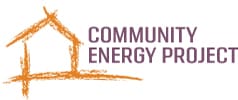Advocacy in Action: Pacific Power Low-Income Discount Program
Lower your electricity bills with Pacific Power!
Turning on the lights in your home should not have to be a luxury, or cost your peace of mind. The average Oregonian spends about $118 per month on electricity, adding up to $1,416 per year. In an effort to reduce these costs, the Oregon state legislature passed the Energy Affordability Act (HB 2475) in 2021. This bill was created to help low-income families afford their energy bills by giving the Oregon Public Utility Commission (PUC) the authority to direct investor-owned energy utility companies to offer more flexible rate options.
Earlier this year, we shared our advocacy efforts surrounding PGE’s Income-Qualified Bill Discount Program. Now, we’re thrilled to see other utility companies launching discount programs of their own!
On October 1, 2022, Pacific Power unveiled their Low-Income Discount Program.
What does this mean for your bill? Eligible customers will receive the following discounts: State median income guide
- 20% discount if their income is between 21% and 60% of state median income
- 40% discount if their income is between 0% to 20% of state median income
This program’s application process is simple and is available to qualifying residential Pacific Power customers. Eligibility is determined by your household size and the average annual gross income for all members of your household 18 years and older combined (Gross income is your income before taxes). No financial documentation is required to apply.
Apply online here.
Creating the Program
With guidance and feedback from community advocates, Pacific Power designed this bill discount program to address energy burdens for low income customers and increase the affordability of their electricity bills. As we move into the colder months, it’s crucial that low income households don’t have to forfeit the comfort of heating their homes in order to pay their bills or feed their families.
While building this program, Pacific Power thoughtfully deliberated what would best benefit their customers with a group of stakeholders and CBOs (community based organizations) to provide helpful feedback.
It Takes a Village
CEP organized meetings with other CBOs and stakeholders to discuss the details of Pacific Power’s plan and gather recommendations to better help the low income customers this program was created to support. Similar to PGE’s Income-Qualified Bill Discount Program, we focused on eligibility recommendations, self-verification for income, re-enrollment, demographic analysis, as well as the potential for CBOs to enroll clients directly into the program.
CEP has over 40 years of experience serving low income and frontline communities. We recognize that the communities we serve understand their own needs better than anyone else. Our clients’ input plays an integral role in guiding us towards building an equitable distribution of resources and we use these valuable insights to guide utilities such as Pacific Power in creating a well-rounded program.
Throughout this program’s design process, CEP advocated heavily for self-verification of income. The success of this type of verification is often met with skepticism due to fear of fraud, despite the fact that there is very little evidence of such abuse of these programs. Self-verification is significantly more equitable and therefore better supports the individuals this program was created for. Learn more about CEP’s self-verification insights and recommendations here.
Making a Difference
Based on feedback from CEP and other CBO stakeholders, Pacific Power modified important program characteristics such as:
- Increasing discount percentages
- Reducing barriers to access the discount program by adopting auto-enrollment
- Creating a plan to gather demographic information following enrollment to ensure that they are reaching our most vulnerable communities
Now that the program is up and running, Pacific Power continues to work with CEP and other stakeholders to ensure the pilot phase goes smoothly and creates real change in the lives of its participants. We’re here to work for you, your future, and energy affordability for all.

